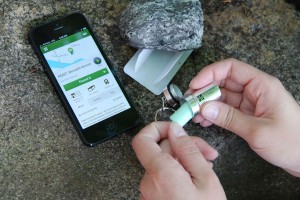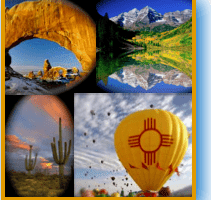Treasure is the stuff of legends, and hunts for treasure are the stuff of adventure and discovery. In Pagosa Springs Country, there is the legend of Treasure Mountain—millions in gold were supposedly buried by 300 Frenchmen under the rocks of the San Juan Mountains. Only one man allegedly made it back to France, with a tale and a map. To this day, no one has found this treasure.

These days, treasure hunting has taken on a decidedly more modern flare, in the form of geocaching and makes treasure hunting a possibility even without the luck of finding a map from days gone by.
Geocaching is a form of hi-tech treasure hunting friendly to all ages, where the treasure is in the form of a cache—some kind of trinket, treasure, landmark, bit of history or otherwise. Sometimes, it is simply a paper on which you write your name, your reward being one of the few to find the cache. Other caches have tiny treasures, from key chains to DVDs. Typically, the harder the cache is to find, the bigger the treasure inside.

When you find the cache, you may take what is hidden inside, but geocaching etiquette suggests that you replace it with something else.
One popular type of cache includes a “travel bug‗ an item that moves from cache to cache, often traveling tens of hundreds of thousands of miles as geo-cachers move it from site to site. Each time the travel bug is found, it is logged into the geo-cache tracking website (www. geocaching.com), keeping the originator and others appraised of the bug’s whereabout and miles traveled, then deposited into another cache for the next treasure seeker.
With a handheld GPS or smart phone app, and a compass, anyone and everyone can get in on the hunt for a cache.
To start your search, log on to the geocaching website, www.geocaching.com and type in a location on the home page. This site gives you coordinates and you’re on your way. For Pagosa Springs, over 3,400 caches appear! Caches are hidden in mountain areas, rivers or downtowns. Geocaching helps you discover beautiful sites, views or downtown areas that you may have otherwise overlooked. Just download the free “Intro Geo-Caching†app from the internet and then you’ll be on your way.

Where I live in the San Luis Valley of Southern Colorado, only 6 caches appeared on my iPhone. A couple were in town and the rest were found around the river. Therefore, my friend and I were able to find almost all of them within a few hours.
Isn’t this a wonderful way to get out in nature and explore all the hidden possibilities of your environment? If you have an interesting experience while geocaching, please leave me a message and I’ll share it.

